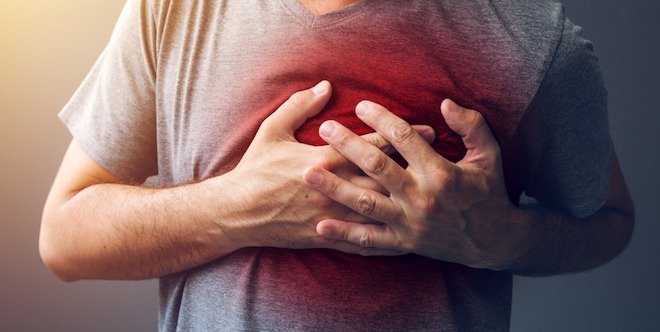
There is a strong link between diabetes and heart disease. That’s why it’s important for people with diabetes to know the warning signs for diabetes-related heart problems.
Risk of heart problems: what you can’t control
Some of the risks associated with heart problems can’t be changed or reduced. These include:
- Age. As you get older, your risk of heart disease and heart attack increases. Generally, men are at increased risk after age 45; in women, the risk increases after age 55. However, both women and men who have diabetes have an increased risk of heart disease after age 40.
- Gender. Before age 55, women seem to have a lower risk of heart disease than men. After age 55, the risk of heart disease increases similarly for both women and men.
- Family history. If a close male relative (for example, your brother or father) was diagnosed with heart disease before 55 years of age, you are at higher risk; if your mother or a sister was diagnosed with heart disease before 65 years of age, you are also at higher risk.
- Pre-eclampsia. This is a condition that develops during pregnancy, and causes a rise in blood pressure and excess protein in the urine. Pre-eclampsia is linked to an increased risk of heart disease.
Risk of heart problems: what you can control
There are some risks associated with heart problems that you can control. These include:
- Cholesterol. High levels of LDL cholesterol (the “bad” cholesterol) increase your risk of heart disease. People with diabetes should aim to have an LDL level of less than 2.0 mmol/L. Diet and medications can help lower your cholesterol levels if they are high. If you want to learn more about cholesterol and how to manage high LDL levels, this article sums it all up!
- Blood pressure. High blood pressure increases your risk of heart disease. People with diabetes should have a blood pressure level of less than 130/80 mmHg. Diet and medications can help lower your blood pressure levels if they are high. Read more about diabetes and high blood pressure.
- Smoking. People who smoke have a much higher risk of heart disease, including atherosclerosis (hardening of the arteries), stroke and heart attack. Quitting smoking is one of the best things you can do to prevent heart disease.
- Overweight or obesity. People who are overweight or obese are at greater risk of having high LDL cholesterol and triglyceride levels, as well as high blood pressure. All of these things can contribute to the increased risk of a heart attack or stroke. Losing weight – if needed – can not only prevent heart problems, it can also lead to better blood sugar control.
- Metabolic syndrome. Metabolic syndrome is a group of conditions – including high blood pressure and blood sugar, excess body fat around the waist, and high LDL cholesterol levels — that occur together, increasing your risk of heart disease and stroke. Losing weight, exercising regularly and eating nutritiously can all help better manage, or reduce your risk of metabolic syndrome; sometimes, medications are also prescribed.
- Lack of physical activity. One of the biggest causes of heart disease in both men and women is lack of physical activity. Including an exercise regimen as part of your daily activities can help you prevent heart problems.
- Diet. Healthy eating can help you control your weight, cholesterol, blood pressure, blood sugar, and it can also help prevent heart disease. Read more about a heart healthy diet here.
- Stress. Managing stress is good for your overall health, and especially heart health. Although researchers haven’t yet established a direct link between stress and heart disease, chronic stress may affect behaviours (such as alcohol intake, smoking, and overeating), all of which can lead to heart problems.
Warning signs of a heart attack that you shouldn’t ignore
A heart attack is a medical emergency, and you should never ignore the warning signs. The classic signs of a heart attack include:
- Chest discomfort
- Nausea, indigestion or stomach pain
- Pain that spreads down the arm
- Feeling dizzy or lightheaded
- Throat or jaw pain
- Sweating
- Feeling very tired and short of breath
Warning signs of a stroke that you shouldn’t ignore
A stroke is a medical emergency, and you should never ignore the warning signs. One of the quickest and most accurate ways that you can recognize the warnings signs of a stroke is to use the “FAST” acronym, as follows:
- FACE – is it drooping?
- ARMS – can you raise them both?
- SPEECH – is it slurred or jumbled?
- TIME to call 911 right away
Warning signs you won’t feel
Known as “silent killers”, high blood pressure and high cholesterol can both increase your risk of a heart attack or stroke. Most of the time there are no obvious symptoms to look out for; therefore, it is important to know if you have either of these conditions and make sure they’re treated appropriately. According to the Diabetes Canada clinical practice guidelines, people with diabetes should have their blood pressure checked every three months, and their cholesterol tested every year.
What to do if you do feel heart-related symptoms
If you think you’re having a heart attack or a stroke, it’s important to take the following steps:
- Call 911
- Stop all activity immediately
- Take nitroglycerin (if it has been prescribed by your healthcare team)
- Take aspirin (if your doctor has recommended that you do so)
- Rest and wait for help to arrive
- Have a list of all your medications available, so that the hospital’s healthcare team can understand your medical history


